Can Mice Climb Walls
Automatic Guards
To stop rodents traveling or climbing along particular routes, install sheet metal and similar guards. Guards must be wide enough and positioned appropriately to keep rodents from climbing over or jumping around them.
Attach sheet metal bands to walls to prevent climbing by rodents. The rodent guards must be between 12 and 18 inches in width, 36 inches high above the ground or floor. They can be installed to prevent rodents from climbing the outside of buildings that have rough exterior walls. To rodentproof corn bins and cribs (Figure 2), you can use rodent guards with hardware cloth or any other appropriate materials.
Purchase disc baffles or pipe sleeves to stop rats walking on cable (Figures 5, a and b). Consult with your utility company before installing any of these products yourself. Under no circumstances should electrical lines be approached. The utility company should install them.
Cut a 2 inch diameter pipe in lengthwise to protect horizontal non-electrical bearing lines. Spread it out and then place the pipe over the cable. The sleeves should fit loosely so they rotate as rats try to traverse them. Sleeves should be at least 18 to 24 inches long.
Collars may be painted to blend with background colors. Use metal collars to encircle trees and poles to prevent travel by rodents (Figure 6). Collars should be at least 2 feet wide and placed 6 to 8 feet above the ground. Overlap collar edges and connect by springs to allow for tree growth or to be enlarged on a biannual basis.
You may have evidence of mice in your home
If holes have appeared in food bags that you’ve left on the counter overnight, your kitchen might have been visited by a family of mice. Maybe you’ve heard sounds within the walls and under the floorboards as you fall asleep or wake in the middle of the night – that could very well be the sound of mice forging trails through your home. Maybe you have even seen one crawl along the bricks or rafter of your fireplace. In that case, it’s obvious that you have a mouse problem. Even if you don’t spot them with your own two eyes, you can still zero in on a mouse invasion if you spot the following signs of evidence:
- Runs. The same route is used over and again by mice. Over time, they can leave runs along drywall, wooden floors, tables and countertops. It might not be obvious to the naked eye, but if you look close you might see faint runs in front of pierced bags of bread or chewed buckets of fruit.
- Droppings. Droppings from mice look like little dark seeds. The newer droppings are shiny and black and the older ones faded and dried. A cluster of droppings is a sign that mice may have invaded your home through a crack, hole or vent.
- Nests. Mice can chew through clothing and cardboard boxes to make nests when they are active. Mice tend to build nests in dark areas of homes, such as in cabinets, closets, storage boxes and under furniture. If you smell something strange around an area you rarely check, it may be coming from a mouse nest. You might find a nest under an old pile of clothes in your basement. Nests and droppings are often found near one another.

Gaps Between Building Materials
Wherever different building materials meet on a home there is an opportunity for mice to find a gap. A common point of entry for mice is the gap that often exists between bricks and soffit. Even in new homes, it is common for soffits installed to leave a tiny gap that mice can slip through. These gaps can become more prominent as homes change over the years. This gap is especially worrisome as it usually extends around the full perimeter of the home.
There are also gaps in the following areas:
- Gap between the foundation and siding
- Roof-Soffit Gap
- Roof-Fascia Gap
Can Mice Climb?
Yes, mice can climb. Because mice are intelligent animals, they can climb on small items as well as larger obstacles such tables, walls, or beds. It is unlikely, however, that mice will jump over walls or beds unless there are serious problems.
As tiny as they might seem, mice don’t fear heights and enjoy exploring areas that are close to their nest. They will climb on literally any object looking for food or material that they can use to build their nests. To escape predators, they will instinctively jump on wires and branches to get away from walls.
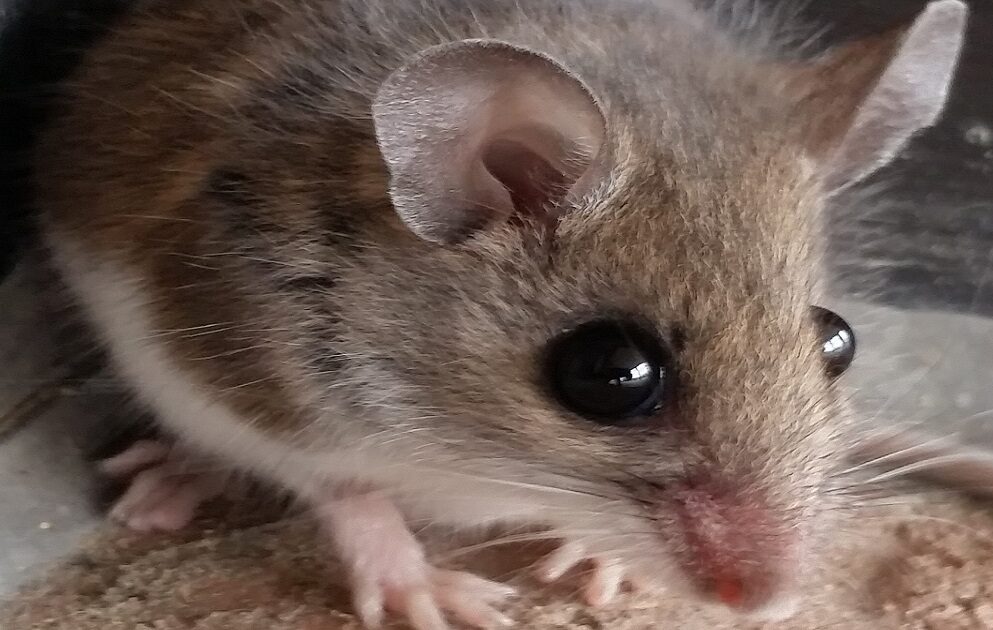
Getting Rid Of Mice
The last section may certainly have been a bit graphic and overwhelming to digest. But hold back the bile and take a deep breath. You always have the ability to handle an infestation.
There are several things you can do to get rid of mice and then keep them away. The following are some of the common practices you should try to start at home:
Use mouse traps or baits
Start laying traps and baits as soon as you spot a mouse or suspect that there is one in your home.
This requires you to think quickly and be clever. You should place the traps where mice can hide, such as crawl spaces and dark corners. To ensure that the traps are in the right places, look out for any nests or trails the mice might have made. You may want to leave some trial baits out initially to give the mice more confidence to go into the trap for the food without any consequences. Once the mice are not suspicious of the trap, you can set the final trap.
Apart from that, ensure the safety of your children and other family members so they do not accidentally step on the traps. They should be kept away from any places your pets or children might go, but they shouldn’t be in areas where mice may seek refuge.
Board up Any Openings
Comb your home for any openings or access points.
You should seal any gaps in your building materials and door or window frame openings that aren’t properly sealed. Get your doors and windows fitted properly, cover pipe openings with a mesh filter so mice can’t get in. Roof vents should be treated in the same way. It has been mentioned earlier that mice may not find it terribly hard to nibble through the mesh or wire filter.
It is up to you to make sure that your installation is strong and can’t be broken.
You can also use cement, plaster of Paris, or wood to board up any gaps or openings that may be access points for mice. You must seal the home and close all doors. It will be difficult and you might need professional help.
Besides, if you have an infestation at hand, it is best to call a professional pest control company.
Protect Your Environment from Rodents
Closing off the access points in your home is not enough.
It is important to make sure that your surroundings are rodent-proof. This will prevent mice from climbing on your exterior walls or pipelines running along them.
Make sure your garden is clean.
If there are bird feeders in your yard, check it frequently to see they have not become abodes for mice and other small rodents. Make sure you trim any grass that is growing in or around your home. If the grass is long and unkempt, it is perfect for mice to travel through without being detected.
Keep in mind that mice don’t like being in open areas where they can be seen. So if you can put hurdles for the mice in your yard that may make it easy for you to rodent-proof the area around your home.
Other Methods
A natural method of keeping rats out of your home and especially out of your bed is peppermint oil. The natural repellant peppermint oil can be very effective in keeping mice from your home. But again, if you have an infestation at hand then you may require something stronger.
A lot of people also advocate for using poison to exterminate the rodent population entirely. The mousetrap is only an additional measure but the real antidote for a rodent infestation is to use poison. This may not be everybody’s cup of tea. If you prefer humane ways to get rid of mice, then a mousetrap should be your best option.
Get a Cat!
Although this isn’t the best solution for all, it may be the right one for you if your budget allows.
However, every cat does not have the genetic predisposition to capture mice.
They just want to relax and have fun, not work hard to capture their prey. Even though domestic cats may sometimes be a nuisance, it can still keep mice away. Even though the cat may not be actively looking after mice, they’ll still feel scared when you let them in your house. It is worth trusting your cat.
Are Mice Good Climbers For Kids
Mice Facts for Kids Despite their small bodies, mice eat 15 to 20 times a day. The house mouse produces 40 to 100 stools per day. Mice are good jumpers, climbers and swimmers.
Mice are smart and very good climbers. You can even climb up on your bed! Mice are generally not interested in people, and won’t lie down next to you. You can make the rodents lie down if they are fed in their bedroom or bed.
Mice are capable of climbing many walls, depending on their surface. You can use it to scale bricks, concrete, stucco and wood surfaces. It can climb walls using supports such as ropes, cables and planks. They may have difficulty climbing on slippery surfaces like glass.

Can Mice Climb Furniture?
As much as mice are more outdoor rodents than rats, they can set up a home in your house and jump on and off pieces of furniture.
Most materials that are used to build furniture can be easily climbed by mice.
They include:
- Leather
- Wool
- Cotton
- Wood
All these have aerations that provide stable footings for mice and make it simple for them to climb, move around, and through pieces of furniture.
Mice can climb beds too, and although they are unlikely to come near you when you are sleeping, they will be on your bed looking for food when you are not there.
Can Mice Climb Walls And Stairs?
Wild mice will always be on the hunt for places to nest and reliable food sources. They have sharp claws, are very strong for their tiny size, and can spot a traversable route. They also have a strong tail that acts as a balancing mechanism and when combined with the ability to flatten themselves against a vertical surface, it prevents them from easily falling off.
They are able to climb rough and porous surfaces and because of this combination of attributes they regularly climb interior and exterior walls. Wood, wallpaper, stucco, and brick are no obstacle for our whiskered pests, which means that most surfaces including interior walls and stairs do not prevent their march.

Mice In Crawl Spaces
When mice make their way into your crawl space, they’ve found an ideal home; a dark space to sleep all day, from where they can access various holes and ducts to your kitchen at night. Your crawl space is likely to have been a prime target from the beginning if your home is near wild mice. Of course, mice generally have the advantage when it comes to crawl spaces, since it’s an area that’s dark, narrow and rarely checked by homeowners.
Although you might think your crawl space is safe, rodents can easily enter through small cracks. Mice can fit through holes as small as a dime, while rats are able to squeeze through openings that measure only a quarter of an inch. An infestation can slowly eat away at the foundation of a home. While the crawl space serves as a vapor barrier to your house, it can all become compromised if mice make their way inside. The holes they leave could degrade the water barrier of your home, which would in turn allow rancid mold and fungi to form. However, the following do’s and don’ts can make your crawl space mice-proof:
- Don’t place edible items in your crawl space. Mice are able to smell food and will eat through wood to find any treats.
- Place an on/off light in your crawl space; either one that you can turn on recurrently each day, or one that will automatically activate every few hours. Light can be used to repel mice. Mice are oblivious to light.
- Keep your crawl space dry. This not only includes water but food as well. Water can be derived from food, and mice may drink it. It is important that your crawl space doesn’t contain moisture.
- Seal off holes around your house. If you notice any holes that look like they could be entrances for mice, cover those holes with anything that will block rodents but still let air pass through, such as mesh or cloth. You must allow air to move; otherwise, moisture can form in your foundation which could cause far more problems.
- Place an ultrasonic pest controller unit in the crawl space to ensure maximum protection against mice. It will emit rodent distressing sounds that are undetectable by both humans and pets at different volumes and frequencies.
Three Signs that Mice are in the Bedroom
They are great at hiding so it is hard to see them in the bedroom. These are the signs that indicate a mouse infestation.
- Droppings – Droppings are a sure sign of mice activity in an area. They are around a quarter inch long. The length of time the mouse poop has been present will determine its color. Fresh droppings are typically dark and moist while older droppings are gray.
Droppings: Droppings can be a sign that mice are active in an area. About a quarter of an inch in length. The color of the mice poop will depend on how long it has been there. Older droppings tend to be grayer and darker.
- Scratching Noises – Since they are mostly active at night, there’s a chance that squeaking and scratching noises can be heard at night. When rodents communicate or are running for food, you can hear them making these sounds near walls.
Scratching Sounds – Because they’re most active at night, it is possible to hear them making scratching and squeaking noises at night. These sounds are audible near the walls when the rodents are communicating or running around in search of food.
- Foul smell and traces of urine – They won’t choose a place where they are comfortable urinating – in fact, they will do so on your bed. There is a possibility that the bed has been invaded by mice.
Foul smell and traces of urine – They won’t choose a place where they are comfortable urinating – in fact, they will do so on your bed. There is a possibility that the bed has been invaded by mice.
How to keep mice out of your bed
Anyone who has had the unpleasant experience of lying in bed, unable to relax because you can hear telltale scratching or squeaking sounds coming from a wall or ceiling nearby, knows the feeling of frantically wondering how to keep mice out of your bed. Fortunately, finding actual mouse droppings or other evidence of rodent activity among your sheets and blankets is rare. It is rare to find rodent droppings or evidence of mouse activity under your sheets and blankets. Mice and rats will be more comfortable in the kitchen and around pets’ water bowls, as well as in your bedroom. They’ll also prefer building nests in walls and ceilings over your bed. Mice actually prefer to avoid human contact and are rather shy creatures, so the chances of them snuggling up with you in bed is not likely.
Although finding mice in your bed is not a common phenomenon, there are a few things you can do to prevent mice from entering your bedroom:
- Stop snacking in bed. Mice are hungry and thirsty when they come out. You must not allow them to find food and water in your home.
- Allow your cat to stay in your bedroom. Cats give off a smell that mice register as predatory, and they will tend to avoid these pets when possible.
Homeowners who limit their food intake to the kitchen are well aware that if they see a rodent in their home or any signs of it, you should educate yourself about the pest. This includes what draws them to your house, the health hazards these rodents present to your family, and how to deal with an infestation. First, let’s address one of the most common questions homeowners ask–can mice climb up walls?
What is the best way to tell if I have rats?
There are many telltale signs that you may have rats. A few of the clearest indicators are if you find rat droppings or hear scratching in the walls. Although rat droppings can be easily distinguished from other rodent droppings, they are very small. Small, brown, and generally tapered, you’ll find them in dark corners of your home or even along the baseboards.
Check underused parts of your home, including behind boxes in the attic or basement. Rats love to hide in warm, dark corners. Sometimes they nest within walls. If you see signs of rats around your home, it is important to investigate the location.

How mice can get into your home
You can allow mice to enter your house in many different ways. It can be an open window, a tree outside your verandah, a water pipeline that is easy to access, or simply a door you left open – some of these less well-known methods of entry are the first to be checked by professional exterminators. The following are some of the common ways in which mice can get into your home.
Roof Vents
It’s not difficult for a mouse to climb your walls and reach the roof.
Mice may have access to many places on the roof.
You can put a mesh screen on the mesh or a net to prevent mice from coming in or to prevent debris from falling but mice are small enough to manage to wade through even these screens.
Keep in mind that mice have sharp teeth and can be skilled nibblers. If the net is not very strong, it is possible for them to chew through the mesh and get into your attic.
Roof vents are one of the most common entry points for mice to gain access to your home. But there are a few different ways in which you can handle this which will be discussed in more detail in a few sections ahead.
Doors and window frames
Doors and window frames are also very common entry points for mice to use.
If the door and window frames are not sealed properly, the space it leaves is enough for a small mouse to get in. Mice are able to squeeze into even the smallest of spaces, so make sure that your door or window frame has enough space for a mouse to get in.
Often, if the door is hanging unevenly or if there is too much of a gap underneath the door, a mouse can surely enter, no matter which story of a building you live on.
By sealing your door frames properly, you can stop mice from entering. This temporary seal will wear out quickly if you use a sponge, cloth or rubber strippings. As mice are capable of chewing through everything in minutes, you need to find a permanent solution as quickly as possible. It is vital to seal these spaces.
There are gaps between building material
Gaps between building materials are also a very common access point for mice.
Sometimes there are gaps between bricks and soffits.
Even though it is small, this gap can be large enough to allow a mouse to climb through. They may eat all of the food and leftovers they find and grow larger once they have settled in your house. They can also get caught in crawl spaces and become trapped. This often leads to unpleasant smells, as dead mice decomposes away from sight.
You can prevent these from happening by sealing any gaps during construction or renovation. You can make do with a gap in the ceiling if you don’t have control over the issues that are affecting the construction.
Utility Lines/Pipelines
Mice can easily access utility lines, water pipes and HVAC lines that run along the walls of your exterior home.
Often there are holes cut out for an exhaust vent or for a water pipeline. Mice can also climb in these holes to gain entry into your house.
Mice can easily travel through pipes and vents to get from one area to the other. Make sure to inspect your vents, and cover any openings to your pipes to stop mice getting in. The pipes also make it easy for mice to climb up a building and into an open window or a balcony.
Since you cannot do without pipe fittings in a modern home, it is important that you keep the area outside your home inhospitable for mice and other rodents. You can do this in many different ways, but we’ll get to that more later.
You might be interested in the following article
- What is the best way to get rid of mice exterminators?
- What is the best way to get rid of mice exterminators?
Do Mice Have Bones?
Yes, mice do have bones. No, mouse skeletons don’t “collapse,” they are just very small and effective home invaders. An average house mouse is between five and eight inches long (including tail) and weighs only an ounce or less. The skull of a mouse is the largest part of their body. If the head fits through an opening in the door, then the rest of the body can also fit. Unlike humans, they have a sloping clavicle, or collarbone, which makes squeezing through small spaces easy.
If there’s enough room for the other parts of their bodies to move, then the whiskers will sense it. That’s one reason they always go nose first instead of backing up in reverse. They rely on their sense of touch and smell to navigate tricky spaces.
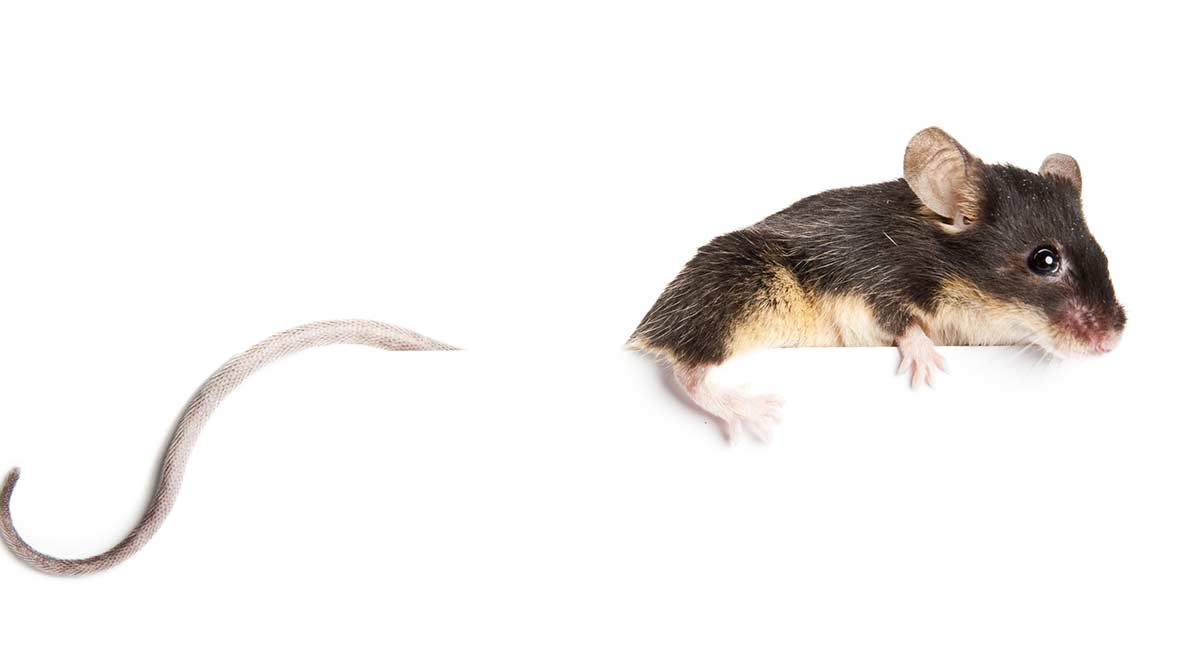
What Kind Of Things Can Mice Climb Up?
Voles Voles will climb trees and rocks and fences and tomato plants, and any other objects in your yard, field or yard, whenever they have the chance. Pruning weeds, grasses and other plants around the outside perimeter of your home will prevent voles from nesting near outside walls.
You are less likely to be able to hear them in your house than you will to actually see them. Mice can get through holes as small as a quarter of an inch. You will likely not find these holes in your cabinets or behind appliances.
Metal, like glass, is a surface that is often too slippery for mice to climb on. Aluminum siding can be climbed over by mice to access handles or corners.
Mice can climb high up, so they can enter homes through holes higher than the ground. To climb rooftops, mice can climb up brick walls. You can also climb vegetation and vines that grow along the roofline.
A. A. Mice possess extraordinary physical capabilities. It can climb and walk on pipes, cables and power lines. You can even walk upside down for long distances.
3. They are little gymnasts. They are excellent swimmers, jumpers, and climbers. Mice are able to jump up to 100 feet on their one legs, which allows them to reach the top of pantries or kitchen tables.
Are Mice able to climb into bed with you?
Mice can be very smart climbers. You can even climb up on your bed! Mice are generally not interested in people, and won’t lie down next to you. You can make the rodents lie down if they are fed in their bedroom or bed.
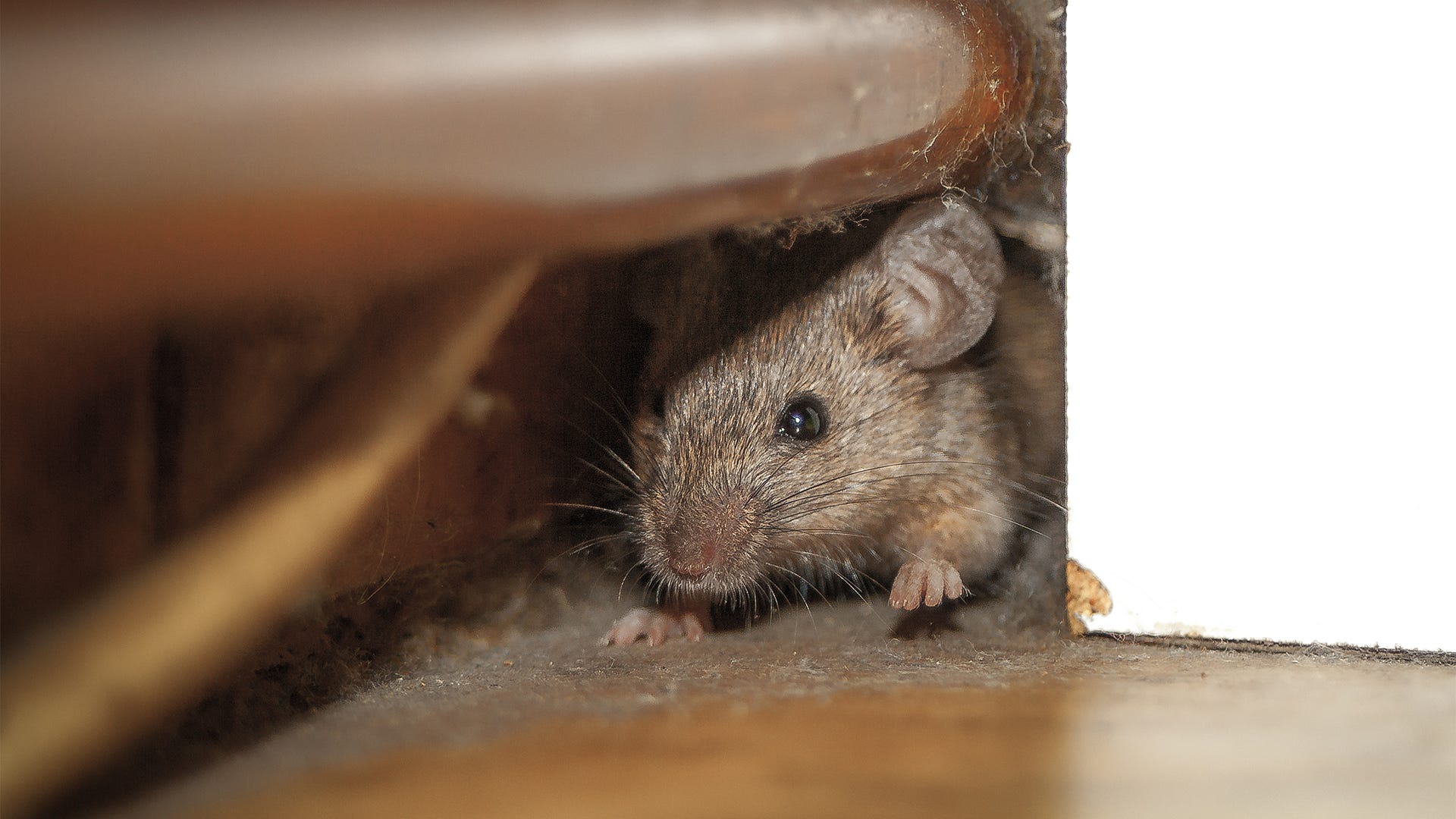
How can mice climb walls? Can Mice Climb Walls? What About Other Surfaces?
Mice are very flexible rodents, and this makes it simple for them to escape your sight. Mice are fast, and will climb any type of surface provided that it is not too rough for them to grasp.
You will find them either in your house in hidden areas or in the environment around your house.
Unlike rats, mice are curious creatures. While rats may avoid obstacles for a while before they decide if it is worth their time, mice will explore an obstacle once they spot it.
G2017
- Physical Capabilities for Mice and Rats
- Drains and Pipes
- Mechanical Guards
- Livestock Feed Bins and Bunks
- Feed and Refuse Storage
- Acknowledgments

Is there anything that rats cannot climb?
Put simply; they can’t climb anything smooth-running or slick. They need to be able to grab to the surface with their paws; otherwise, they won’t be able to climb it. For example, a plastic sheet or a laminate base wall are among the things that rats won’t be able to climb. Anything slippery is a no-no for them. Even tiles, especially small ones, are hard for them to navigate.
Can Mice be Good Climbers
Mice can jump, climb and swim well. Mice can even jump in the air on one leg, allowing them to climb over kitchen tables or pantries to eat. To keep mice and other pests out of food, store supplies in hard plastic containers with tightly closed lids.
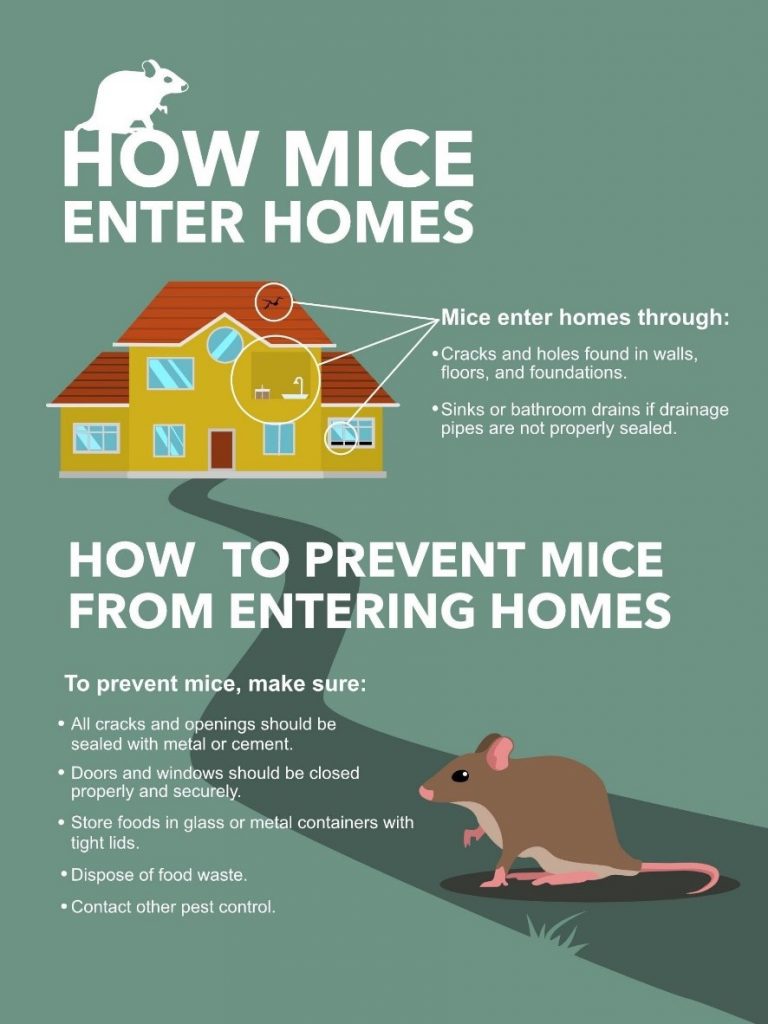
Controlling Rats And Mice – A Guide To Preventing Infestations
There are three main reasons rodents must be controlled: They can transmit diseases; contaminate food and can cause damage by gnawing woodwork, water pipes and electric cables.
How to Make Your Own Mouse Traps
- You can do this by using a hole of nickel size in your wall.
- It is rather comfortable to use something transparent on the top of the box to check the process.Your first victim will soon appear.
Snap traps and glue trays are available ready to use for mice that have been stuck to walls.

Can Rats Run Up Walls?
When they enter on the ground floor, they usually walk along the walls of the house and enter the attic. The attic is where rats spend the majority of their time. Sometimes they can take root in walls and create nests.
Should I Keep The Lights On?
Mice are equipped with biological clocks that can be synchronized to light. It tells them when the best time is to sleep or look for food. They are most active at night because it is the best time for them to avoid larger predators. Since they are careful in avoiding danger, they can be scared off by flashing lights and loud noises.
Mice are adaptable and will adjust to any lights that are left on at night. When this happens, they will stop at nothing to gather the crumbs of food left on the bed when you were snacking.

Concrete
Concrete walls are made up of thousands upon thousands of air bubbles that create a rough outer surface. These pinholes can be gripped by mice with their claws to allow them to climb if they are large enough.
Succo, siding and wood finishing are all excellent surfaces for mice that can be climbed vertically.
Can Mice Climb Walls

Blog
Anyone who has had the unpleasant experience of lying in bed, unable to relax because you can hear telltale scratching or squeaking sounds coming from a wall or ceiling nearby, knows the feeling of frantically wondering how to keep mice out of your bed. It’s rare that you find rodent droppings in your bedding or any other signs of activity. You are less likely to see rodent activity in your bedding and sheets if they live in your home, such as your pet’s food bowls and kitchen. In fact, rats and mice will often choose to build nests inside your walls rather than where you sleep. You won’t find them cuddling up in your bed if they avoid humans and are very shy.
Although finding mice in your bed is not a common phenomenon, there are a few things you can do to prevent mice from entering your bedroom:
Any holes in walls that you might have, seal them. Mice are capable of sneaking through tiny cracks so make sure you seal all holes.
Stop snacking in bed. When mice make their way out to your room, they’re looking for water and food. Don’t let them find it in your room.
Make sure your bedroom is clear so children don’t find places to nest or hide.
Instruct your cat that he or she can sleep in the same room as you. You can encourage your cat to sleep in your bedroom.
Even those who keep their snacks to the kitchen, homeowners should be aware of the dangers that mice pose to their health. You need to learn more about them, how they are attracted to your house and the risks to you and your family. First, let’s address one of the most common questions homeowners ask can mice climb up walls?
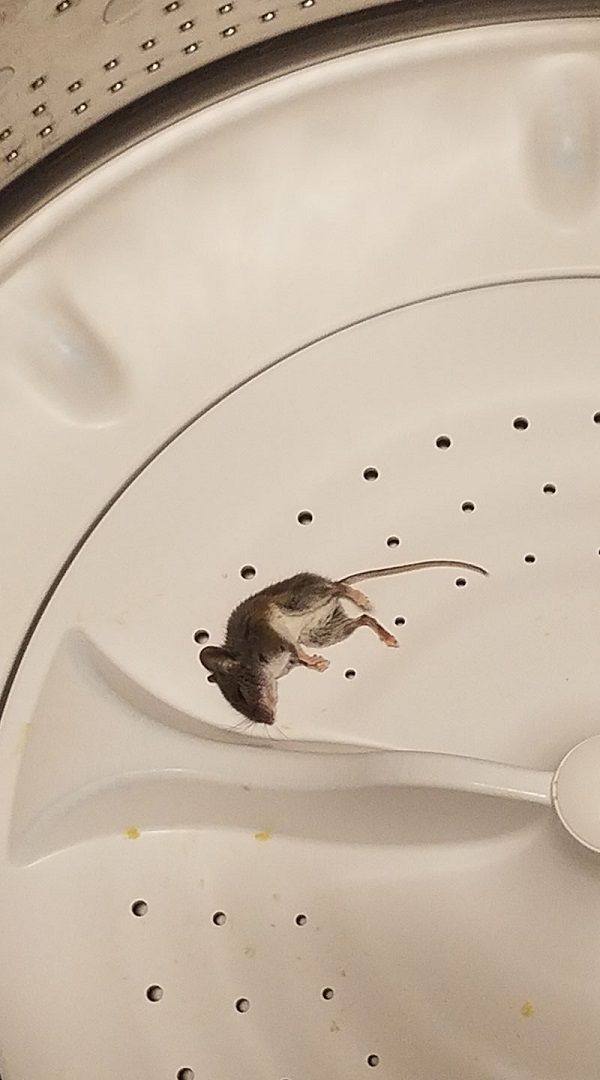
Is it possible for mice to scale ceilings or walls?
Many homeowners are now asking if mice have been seen in high-up areas of their home. While they can’t climb the ceilings like roaches, evidence that mice were found in these high-up spots is evidence that mice do climb walls.
The rodents have the ability to jump astonishing distances and climb walls that may be textured or angled. The rodents can climb ropes and drapes with relative ease.
For instance, homeowners might find mouse droppings on the top of cabinets, or even a hole in the ceiling that’s closer to the floor than they thought. Rodents might have left greasy or discolored marks on top walls from rubbing their hands against them.
One common question homeowners frequently ask in frustration is: Why did mice and rats decide to stay in their house instead of someone else?

Are You Still Not Satisfied with Your Purchase? Read More
Here’s the ultimate 1 minute guide to mouse traps. When mice infest a home, they’ll generally use the darkest corridors – such as air ducts, crawl spaces and wall cavities – to run around in search of food. You can see them through the holes of small coins and climb up walls, so they’re easy to catch.
If you have evidence that there are mice living in your home, the next article will help you understand what steps to take. You can use our Solution Finder to determine if the problem is caused by mice.

Is it possible for rats to scale walls?
You may have many questions about the existence of a rodent in your home. These larger rodents can enter homes through many different ways. Can rats climb walls? If the wall’s surface is not too rough, then rats can be efficient climbers.
The roof rat loves to climb and gnaw on electrical cables. Norway rats, another popular household rodent are also good climbers. However they’re not as agile as roof rats. While rats and mice are capable of climbing up walls, their entry points to the home must be blocked. Make sure to block off any potential entry points between the outside wall and the roof in your efforts to avoid rats in your home.

What attracts mice to your home?
Mice are agile and clever enough that they can climb your walls. So, it might be worth figuring out what attracts mice in the first place so you can avoid inadvertently inviting them over. For mice to avoid your home, you need it to be clean and in order.
Here are some more tips to help you mice-proof your home.
You should seal all entranceways.
Good sanitation is essential: clean up any crumbs quickly, clear the worktops of food scraps and dispose of trash in sealed bin bags.
Clear vegetation: mice can use hanging branches to jump onto your roof, and shrubs and ivy to climb up your walls. Trim them all back and keep grass mown short to reduce places where mice might seek shelter.
You can reduce open food sources by ensuring food containers are sealed tightly and avoiding letting food spill on to the ground.
Removing pet water bowls off the ground will reduce water availability. Also, clean up spillages as quickly as possible.
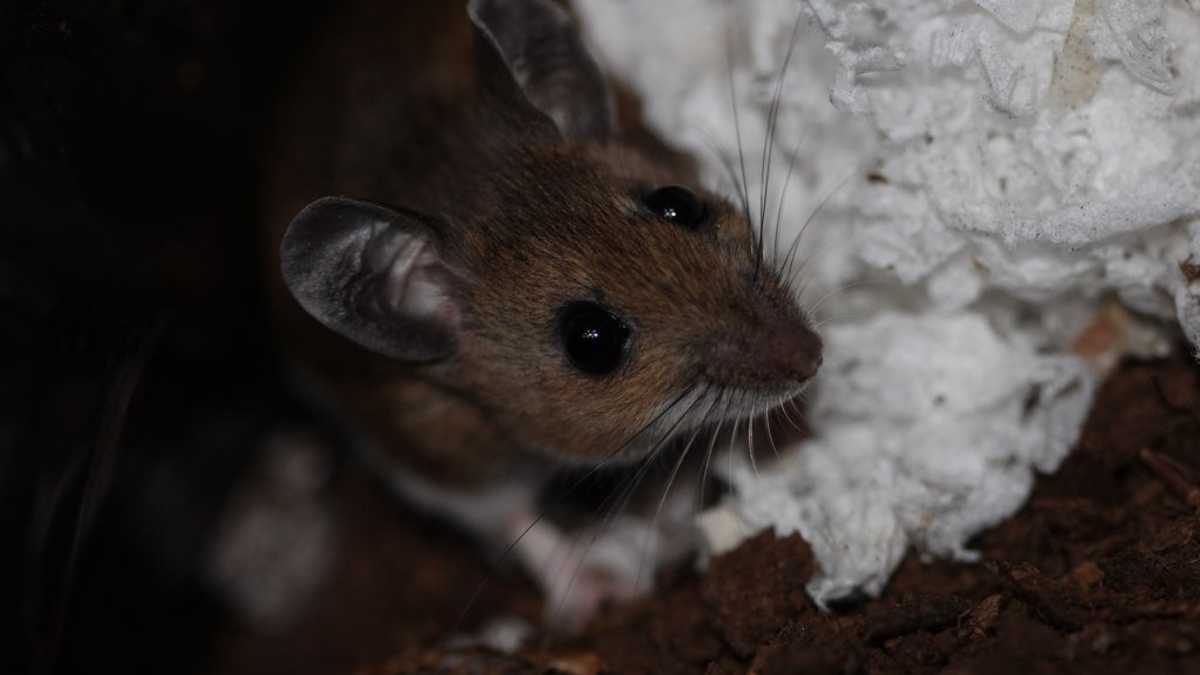
Do Mice Have the Ability to Climb Walls? Here’s Everything You Should Know
Jans Canon Yes and no. Let’s find out more about the house mice and their athletic capabilities.
Is it possible for mice to scale walls, as in the movie?
The “Mouse Hunt”, movie, is a reminder that the mouse was smart, athletic, and skilled. It’s not enough to talk about the main antagonist in “Ratatouille”. Mice are very creative in invading people’s homes. Stories of mice leaping over countertops or climbing up walls are common.
Although mice have impressive physical capabilities that allow them to fit in places you wouldn’t expect and reach new heights, they can also climb up walls.
It all depends on the property of the surface to determine whether or not a mouse is able to climb it.
The tiny claws of these creatures allow them to grip onto uneven surfaces and rough surfaces, including walls with porous finishes.
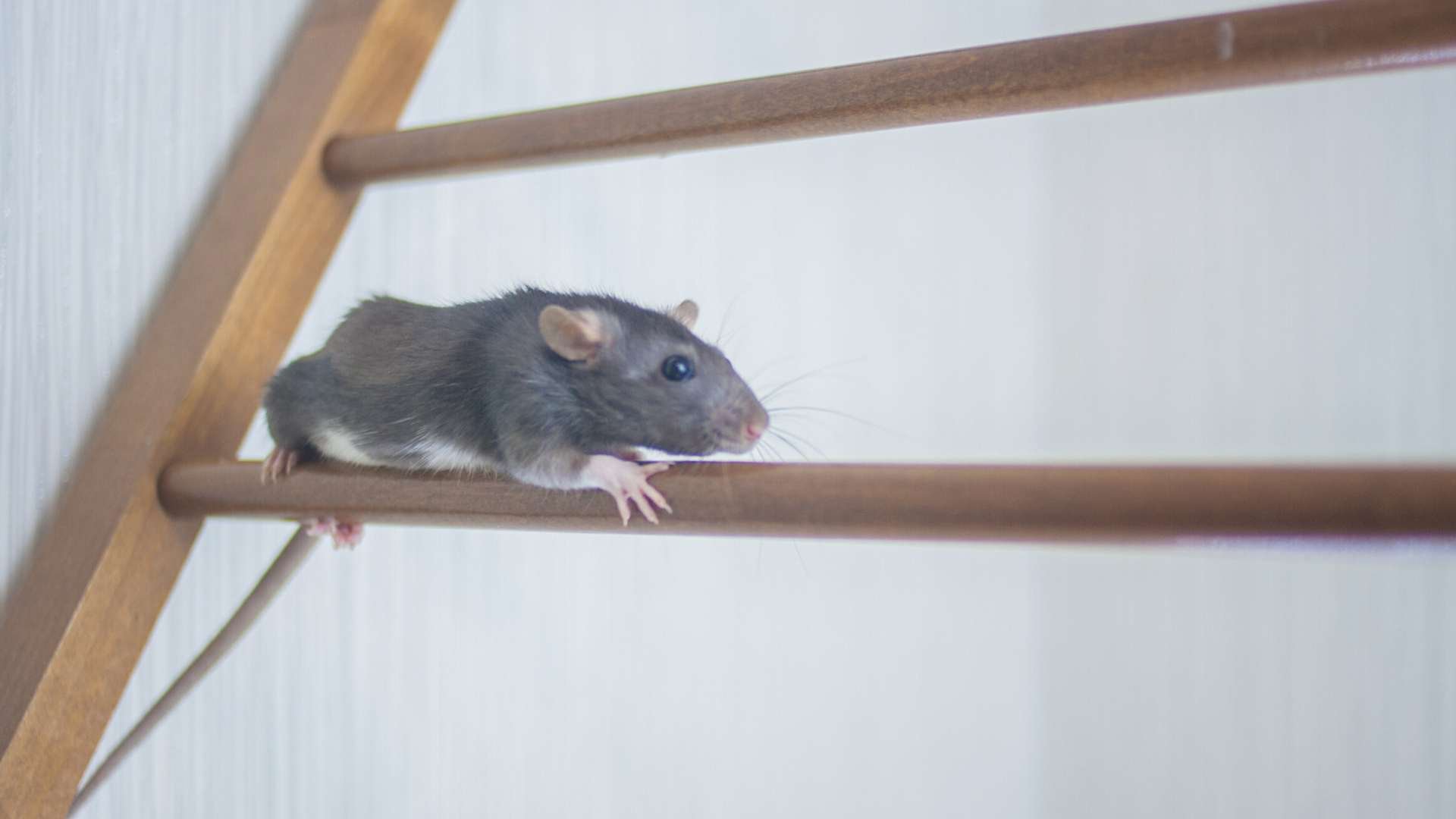
Concrete
Concrete walls, for example, have thousands of small air bubbles inside that make a rough exterior surface. These pinholes can be gripped by mice with their claws to allow them to climb if they are large enough.
Stucco, siding, wood finishing, and shingles also provide excellent gripping surfaces that allow mice to climb vertically.

Walls with Climbing Accessories
Unfortunately, most people do not have bare walls in their entire house, and mice can find other ways of ascending to higher vantage points.
Any kind of wire or cord running along a wall, for example, will allow a mouse plenty of climbing space.
Their claws enable them to grasp tightly on cords with their fingers, while their tails help them keep balance and avoid falling.
Mice can also climb wires and cords small enough to be easily climbed by them.

Bottom Line
Don’t forget that mice love to climb up and nest inside walls.
Don’t forget to remember that mice do not have to stick to a path.
Getting rid of mice is not easy once they invaded your home.
However, they won’t take down the house the way the films portray. However, they can evade you long enough to feel like the cat on the proverbial hunt.

Faqs Regarding Mice And Wall Climbing
Mice can climb a large variety of walls, depending on the surface material. You can find them climbing concrete, brick, stucco or wood finishing walls, as well as siding and stucco. Also, they are able to climb walls without props like cables, shelves or wires. They are unable to scale smooth surfaces like glass.
Most mice can jump up to 13 inches in height, according to most specialists. North America is home to the Jumping Mice species, which are able to jump as high at 13 feet when provoked.
Is it possible for mice to survive within my walls?
They love to live there, as the walls provide excellent nesting areas.
What is the best way for a mouse and hamster to scale a smooth wall?
Yes. You can see that mice can scale vertical walls up to 13 inches high. They’re excellent climbers, and can go even further on surfaces that provide more grip like brickwork, which is why they’re able to travel up and down chimneys with ease.
Is it possible for mice to scale ceilings or walls?
Can mice and rats climb walls? Although you won’t find any mouse or rats climbing over a ceiling, most rodents and mice can walk along a rope and climb up 13 inches on a vertical surface. With this ability, they can easily get into the roofs.
Can Mice Climb Into Your Bed?
Do Mice Can Climb on Beds Mice can climb on any surface and are skilled climbers. Mice can leap up to one foot in the air. This is why jumping or climbing into the bed for mice is so easy. The frame of the bed is most likely constructed from wood and easy to scale.
How do you stop Mice from Climbing Walls!
The best way to deter mice from entering your property is to block entry points and tidy up areas where they could potentially nest. 12.01.2018












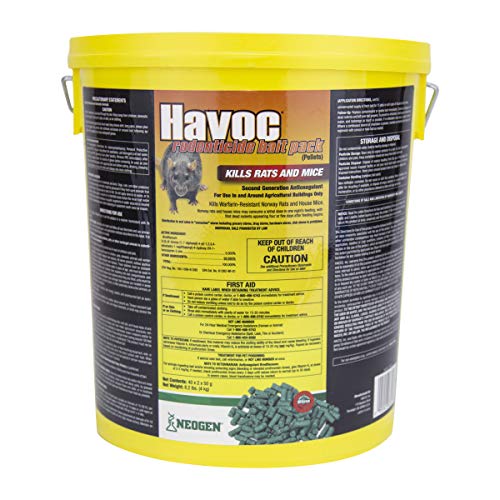











:fill(white)